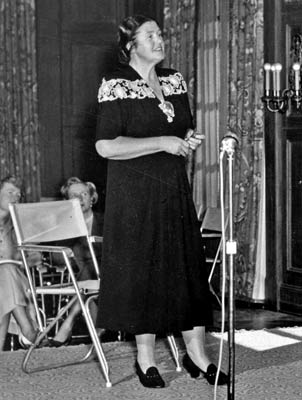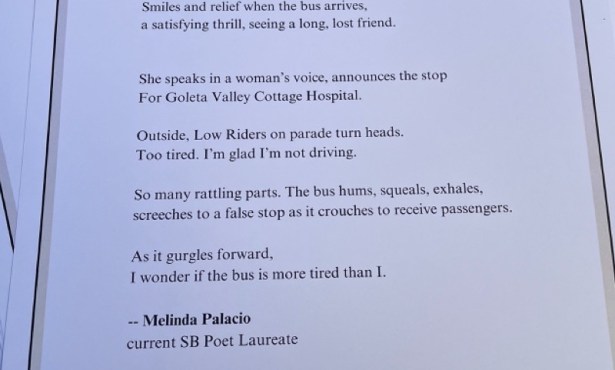‘When did the singer Lotte Lehmann live in Santa Barbara?’
-Dorothy Oksner

The world-renowned operatic soprano fell in love with the Santa Barbara area during her first visit in 1936. In the aftermath of political persecution and personal tragedy, she would settle here in 1940.
Lotte Lehmann was born in a small town between Berlin and Hamburg in 1888. In 1902, her family moved to Berlin where she began serious voice training. Although she did not overly impress some of her early instructors, she persevered, and in 1910 secured a position with the Hamburg State Theater. Here, famed conductor Otto Klemperer discovered her and began to give her larger roles. In 1916, she signed a contract with the Vienna State Opera and began to build an international reputation.
Lehmann was known more for the passion she infused in her music than technical perfection. As she once put it, “I was never a careful singer. I lived my programs.” She was also versatile; throughout her career, she took on some 80 major roles. Among her musical admirers were conductors Arturo Toscanini and Bruno Walter, tenor Enrico Caruso, and composers Richard Strauss and Giacomo Puccini.
In the early 1930s, she made her American debut and she also added German lieder to her repertoire, highly unusual for a woman at that time. She was at the height of her fame when it all began to come apart. In spring 1934, she was summoned to a meeting with Hermann Gring, considered the number-two man in Germany’s Nazi government. Gring offered her the post of National Singer and urged her to perform only in Germany. When contract negotiations broke down, the Nazis banned her from the stage in her homeland.
She still had her post in Vienna, but after the Nazis took over Austria in 1938, it became clear it was time to leave. Shortly after coming to this country, her husband died of tuberculosis, in 1939 in New York. Lehmann turned for comfort and friendship to Frances Holden, a professor of psychology at New York University. Holden was a great admirer of Lehmann and ultimately gave up her career to stay with her and help manage her affairs.
The two drove across the country in the summer of 1940 to Santa Barbara. Lehmann was shown the mountain lodge of George Owen Knapp off of East Camino Cielo, fell in love with the magnificent views, and convinced Holden to buy it for the bargain-basement price of $10,000. Sadly, the friends only had five weeks to enjoy their rustic retreat; a forest fire burned it to the ground. Holden and Lehmann barely escaped as the flames swept through the area.
The two then purchased a house in Hope Ranch. Lehmann continued her hectic schedule -live performances, radio broadcasts, recordings, a movie. She also took up painting, sculpture, and made tapestries. She would write five books, including an autobiography and volumes of poetry.
By the time Lehmann stopped performing in 1951, she had launched another career: teaching. Enlisting the aid of her many friends in music and the entertainment industry, as well as local philanthropists, she launched the Music Academy of the West at Cate School in summer 1947. In 1951, the academy relocated to its present home, Mira Flores, on Fairway Road. For years, Lehmann taught masterclasses at the academy and for a time produced its annual opera. She also taught at the College of Creative Studies at UCSB.
Age and arthritis slowed her, but her last years were filled with tributes. Lotte Lehmann Concert Hall at UCSB was dedicated in 1969. Nicaragua brought out a postal stamp of her, and she received a number of honorary doctorate degrees. She died at her Hope Ranch home in 1976. On her gravestone is carved the tribute that composer Richard Strauss gave her, “Her singing moved the stars.”



